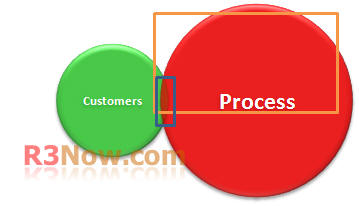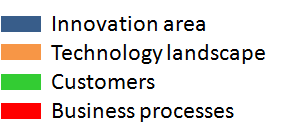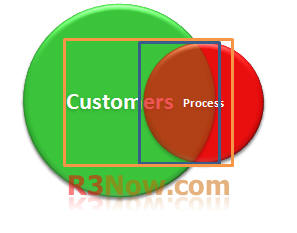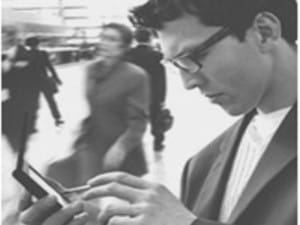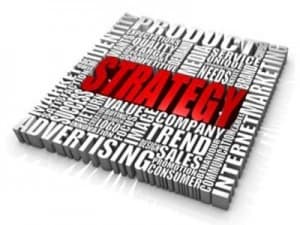 The first part of this series looked at the proper relationship for the CIO, CEO, and CFO. In today’s business environment, the CIO role is already challenging and gaining in difficulty. Today’s CIO must not only keep up with technology and business process improvement, but also become a “mini-MBA” in applying technology solutions to forward-looking business strategies, including customer acquisition, customer retention, revenue growth and profitability. Although it is a monumental task, it is possible.
The first part of this series looked at the proper relationship for the CIO, CEO, and CFO. In today’s business environment, the CIO role is already challenging and gaining in difficulty. Today’s CIO must not only keep up with technology and business process improvement, but also become a “mini-MBA” in applying technology solutions to forward-looking business strategies, including customer acquisition, customer retention, revenue growth and profitability. Although it is a monumental task, it is possible.
Technology can achieve solid ROI and breakthrough results in the enterprise through the following two key areas: customer focus (beyond CRM) together with product or service innovation.
Want ROI? The Next Wave in ERP Will Occur by Changing the Focus from Process to Customer
The heart of the business is the customer– without them, there is no business. Today’s technology initiatives, whether they are with ERP products or a whole host of other technologies and packages, focus more on processes and on technology than they do on the heart of the business.
I am a fan of visual models. They help me to think through, adjust, and understand complex ideas in a simplified and high-level manner. For example, the simple model below represents today’s package application technology landscape in terms of the three key areas of business:
- The large red bubble is the technology process focus on the value proposition of “operational excellence,”
- the orange block is the technology tools and systems that are typically applied,
- the smaller green bubble is the value area of customer focus,
- and the small intersection between business processes and customers in the blue block is the value area of customer-focused innovation.
That is the sad state of today’s typical technology environment.
Customer-Focused Innovation at the Process and Customer Intersection Is the Ultimate Objective of a Change in Technology Focus
Successful package applications and technology application over the next couple of decades will dramatically alter this dynamic. They will focus more aggressively on the customer and the innovation intersection between the customer and business processes. Business processes will need to get closer to the customer, and technology will be focused on the integration of the customer into business processes. By doing so, customers will have a greater influence over the types, quality, and availability of products and services. The following model shows what I believe the next twenty years will develop as the winning technology landscape of the future:
- Although covered with technology, business processes become a secondary focus to the customer for technology.
- To enable this, the technology landscape shifts to encompass more of the customer interaction with the business, potentially leading to ideas such as mass customization.
- The area of customer-centered innovation becomes much larger as businesses learn to integrate their customers deeper into their business processes.
- The customer naturally becomes much more important to the application of technology.
The current state of the economy and global economic pressures has created a disruption in the classic technology model of process improvement and process automation. Together with global competition and a potentially permanent change in customer purchasing characteristics, winners and losers will emerge in the new technology arena. As customers take center stage and innovation becomes more important just for business survival, collaboration will become more important as well. The transformation of business and technology will require new collaborative technology tools to build bridges between business, customers, and product or service development areas.
Because of the pace of change, focusing on best practices and internal process improvement, or even extending processes, is no longer enough. Business cannot solely integrate, automate, and streamline to achieve marketplace success; to one degree or another, nearly every competitor is doing this or is quickly headed in that direction.
Business complexity and the breakneck pace of change turns yesterday’s breakthrough technology into today’s commodity. Vendors are modestly integrated into the extended supply chain, all the way from raw materials to end customer delivery. Customers are more sophisticated and have more options than ever through the Internet. Competitors have worked to incorporate similar technology throughout their entire process chains by integrating, automating, and accelerating their processes. As a result, business demand on technology simultaneously creates new opportunities and new struggles.
Want BIG ROI for Your Technology Investment?
Part 1: What is the Proper Relationship for the CIO, CEO, and CFO?
In the first part of this series, we looked at the changing business landscape and what it means to the CIO, IT Director, IT Manager, and other key technology decision makers. From a high level, the current global business competition, as well as economic issues, are directly affecting the C-level executive requirements and the CIO–CFO–CEO dynamic. This article reviews how and where the CIO role is under tremendous pressure, and how to change the current dynamic by more appropriately partnering with the CFO and the CEO. This partnership is a critical business bridge between lagging business indicators of business health on the CFO–COO side of the business house, and the leading indicators of sales and product or service pipelines on the CEO side of the business house.
Part 2: CIO, CFO, and CEO Alignment – Why ROI is Lacking from Today’s System Landscape
The second part is an overview of the current system landscape and its focus on business processes and the customer. This piece also looks at the future business landscape and how the technology focus and direction will be permanently changed, no matter what happens with the economy and global competition. Because the technology marketplace (business consumer) is becoming more sophisticated and more attuned to business/technology alignment, the IT dynamic is going through a structural change. The whole technology sector is slowly moving away from the operational excellence value proposition to the customer focus and innovation areas of the business. Few of the consulting companies and application vendors see this change and are doing little to address it. This is the area of technology market winners and losers of the next twenty years.
Part 3: Changing the Direction of SAP, ERP, and IT Applications to Focus on the Customer and Innovation
The third part in the series looks at current technology landscapes and how they are aligned. In addition, the article looks at future technology landscapes. A brief review of the supply and demand side of business shows that unless you have lots of customers (demand) to fill a bigger and bigger pipeline (supply), then your business model collapses. While it is hidden during good economic climates, any disruption in those economic conditions that fails to fill the capacity pipeline points out the glaring insufficiency of the operational focus to technology. During any economic disruption, or any reduction in demand from customers for your products or services, the current technology model falls apart.
Part 4: Future Technology Landscape Alignment for the CIO, IT Director, or Key IT Decision Maker
The final part of the series looks at the emerging technology landscape and what the future holds. It lays out an emerging technology landscape model, which has some realignment and components already in use by some of the world’s most successful companies. A new alignment of technology with the customer-facing processes, as well as the use of social or collaboration tools across the enterprise, is explored. The driver for the future change will be because the business does not see the revenue generation prospects of technology. They fail to see the possibilities of promoting customer retention, customer acquisition, innovation, and marketplace analytics. The new technology model looks to change that dynamic.


